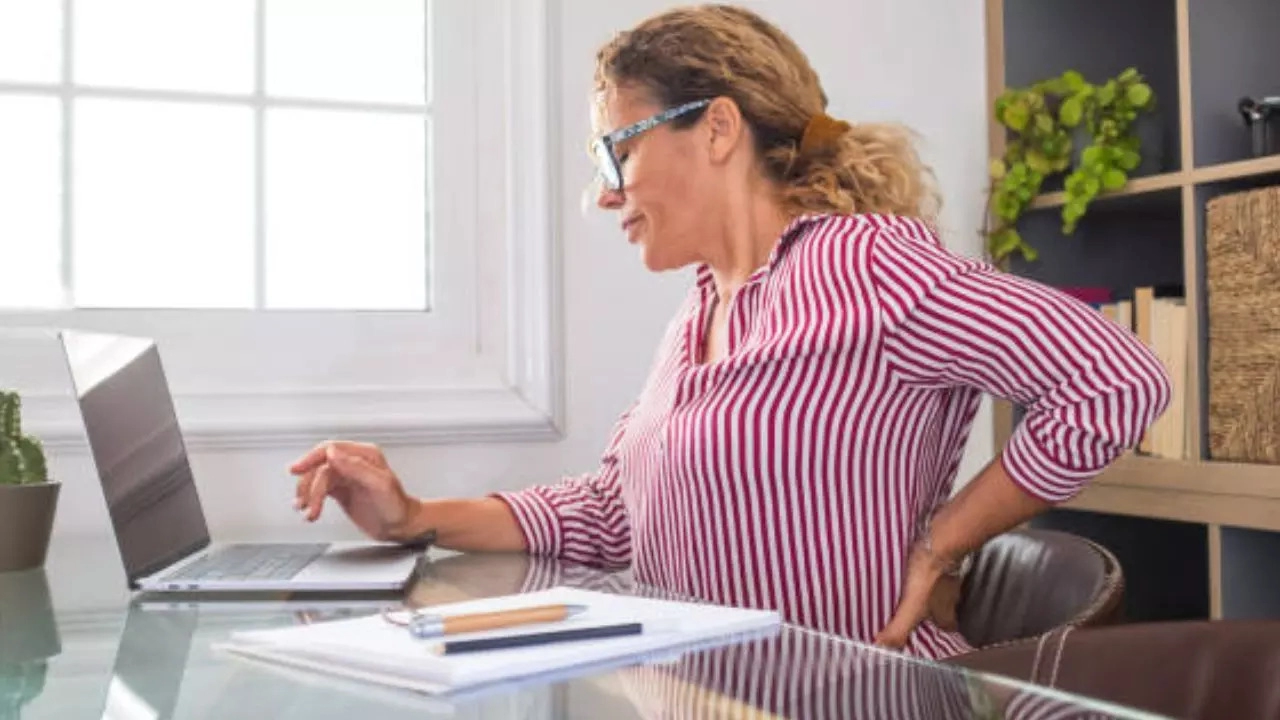Pallavi Mehra • 10 Sep 2024
Sitting For Too Long Can Cause Dead Butt Syndrome - Signs To Watch Out For

Sitting For Too Long Can Cause Dead Butt Syndrome - Signs To Watch Out For (Image Credits: iStock)
Long working hours make us stay confined to one place. There are times when we don't move from our seats for hours. Though we know that a sedentary lifestyle can lead to various health issues including PCOD, PCOS and sudden weight gain, did you know that it can also cause ‘Dead Butt Syndrome,’ or Gluteus medius tendinosis. Dead Butt Syndrome occurs when the gluteal muscles, specifically the gluteus medius, become inactive or "forget" how to function properly due to prolonged periods of sitting. This can lead to various health problems, including back pain, hip discomfort, and even mobility issues.
Symptoms of Dead Butt Syndrome
The gluteal muscles are crucial for supporting posture, stabilizing the hips, and allowing smooth movement of the legs. When these muscles are inactive for long periods, such as from sitting for extended hours, they weaken and cause a range of symptoms:
- Hip Pain: One of the first signs of Dead Butt Syndrome is hip pain, particularly in the upper thigh and lower back area. The pain can range from mild discomfort to severe, making it hard to walk or even sit comfortably.
- Lower Back Pain: Weak gluteal muscles can place extra strain on the lower back. Since the glutes are responsible for supporting the pelvis and spine, their inactivity can lead to lower back pain, which may worsen with prolonged sitting or standing.
- Tightness in the Hip Flexors: Sitting for too long shortens the hip flexors, which can cause them to become tight. This tightness can contribute to poor posture and affect mobility, exacerbating the effects of Dead Butt Syndrome.
- Numbness or Tingling: Some individuals may experience numbness or tingling in the gluteal area or legs, often because the nerves in the lower back and hips are compressed due to weakened muscles.
- Reduced Mobility and Stability: As the gluteal muscles weaken, it can become difficult to perform basic movements, such as climbing stairs or bending down. In severe cases, the instability can lead to muscle imbalances and even injury.
Several studies have emphasized the dangers of prolonged sitting, especially in relation to muscular and skeletal health. A study published in the American Journal of Preventive Medicine shows the detrimental effects of sitting for more than six hours a day, linking it to various health issues including musculoskeletal disorders. Similarly, research in the British Journal of Sports Medicine found that prolonged inactivity can lead to muscle atrophy, particularly in the gluteal muscles, contributing to conditions like Dead Butt Syndrome.
Dr Chris Kolba, a physical therapist at Ohio State University Wexner Medical Center, has explained that gluteal amnesia occurs because sitting leads to an overuse of the hip flexors and underuse of the glutes. Over time, the body "forgets" how to activate the glutes properly, leading to weakness and associated pain.
Preventive Measures for Dead Butt Syndrome
While Dead Butt Syndrome can cause discomfort, it is preventable. Here we have listed some simple lifestyle changes, which can reduce the risk of developing this condition.
- Take Frequent Breaks
One of the easiest and most effective ways to prevent gluteal amnesia is by breaking up long periods of sitting. Aim to stand up and move around for at least five minutes every hour. Even simple stretches or walking around your workspace can help engage the muscles and keep them active.
- Glute Activation Exercises
Strengthening your gluteal muscles is essential for preventing and reversing Dead Butt Syndrome. Exercises such as glute bridges, lunges, squats, and leg lifts specifically target the glutes and can help improve their strength and functionality. Incorporating these exercises into your daily routine can prevent muscle atrophy and promote better posture.
- Stretch Your Hip Flexors
Since tight hip flexors contribute to gluteal amnesia, it's important to stretch these muscles regularly. Simple stretches like the standing quadriceps stretch or the runner's lunge can help loosen the hip flexors and reduce strain on the glutes.
- Posture Improvement
Maintaining good posture, both while sitting and standing, is crucial for preventing Dead Butt Syndrome. When sitting, ensure that your feet are flat on the ground, your back is straight, and your hips are positioned properly. Using an ergonomic chair or standing desk can also help.
- Foam Rolling
Foam rolling can be a useful tool for improving blood circulation to the gluteal muscles and releasing tension in the hips and lower back. Regular foam rolling can alleviate tightness and pain, ensuring that your glutes remain active and healthy.
Get Latest News Live on Times Now along with Breaking News and Top Headlines from Health and around the world.